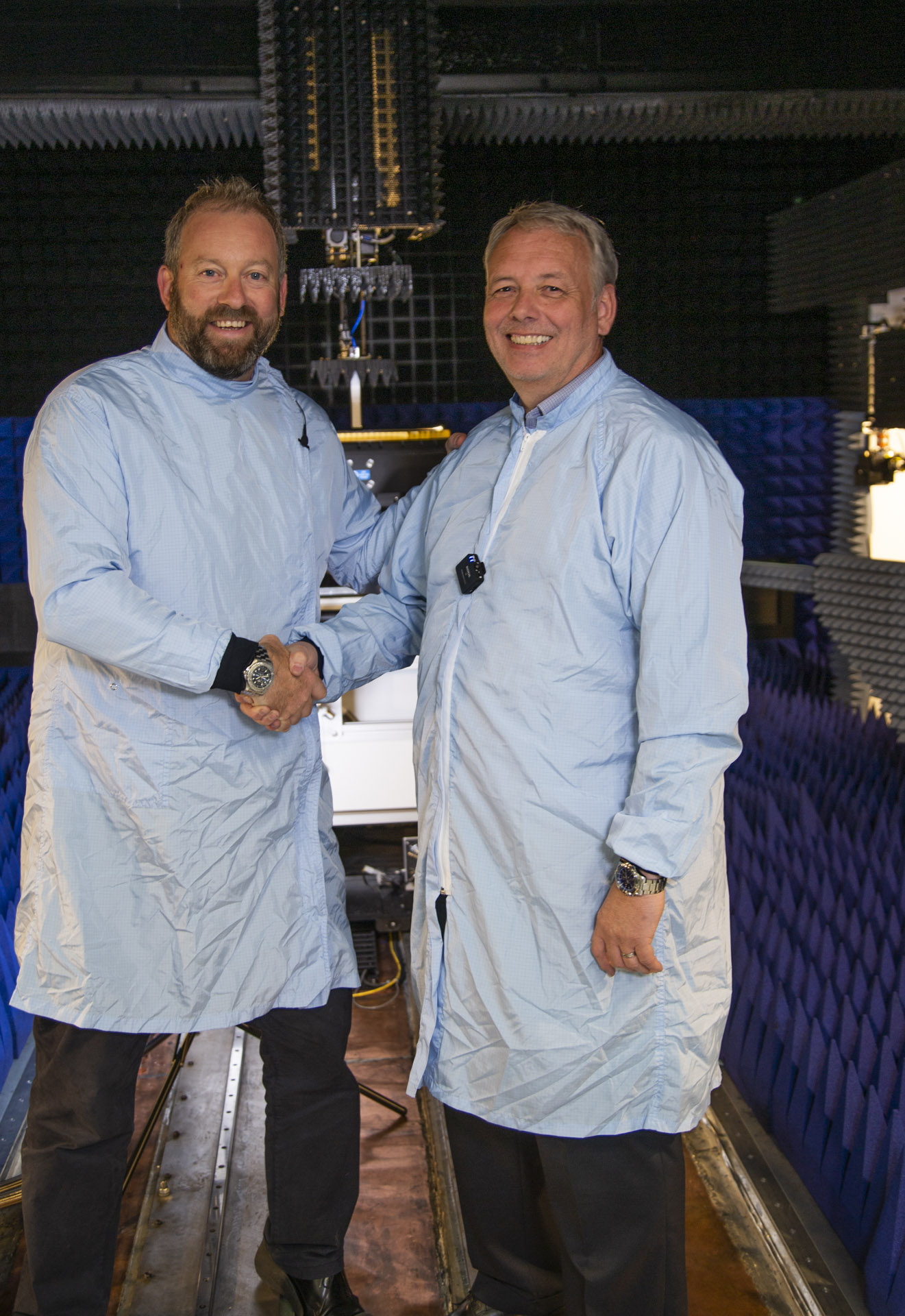Leonardo engineers working have created a ‘one button’ solution to achieve a 24 to 30 hour radar antenna test that has been completed and commissioned into full service earlier this year. Brian Kerse, Chief Engineer - Antenna Test, led the design and build of the new radar antenna test facility.
 Brian said: “The purpose of this groundbreaking automated near-field range is that it literally allows us to take a freshly built radar array fully test it, and get to the point that we are ready to deliver it without any human interference. So half an hour's work to set things up, and 30 hours later we have a fully tested and functional array. We shared our design concept with our supplier and asked them to build a capability that would allow us to swap between the alignment laser and different waveguide RF Probes (Radio Frequency), creating the first of type technology of its kind in the world. Without question, this new capability puts our business in a much better competitive position, as we believe it is the only automatic radar antenna test solution facility that exists in industry at present.”
Brian said: “The purpose of this groundbreaking automated near-field range is that it literally allows us to take a freshly built radar array fully test it, and get to the point that we are ready to deliver it without any human interference. So half an hour's work to set things up, and 30 hours later we have a fully tested and functional array. We shared our design concept with our supplier and asked them to build a capability that would allow us to swap between the alignment laser and different waveguide RF Probes (Radio Frequency), creating the first of type technology of its kind in the world. Without question, this new capability puts our business in a much better competitive position, as we believe it is the only automatic radar antenna test solution facility that exists in industry at present.”
Radar antenna measurements have to be undertaken in a carefully secured, calibrated and controlled environment, as the radar transmits and receives high power Radio Frequency (RF) energy. Because our new test facility, called a Production Near-Field Range (PNFR), is fully automated, it is easily repeatable in our manufacturing hall and no longer needs to be run by expert antenna engineers.
Test operators only need 1 or 2 days of training to allow them to become competent in running the facility, allowing a new generation of talent to develop their expertise in the field of testing within the business, while specialised Leonardo antenna engineers are freed up to focus their time and expertise on value adding innovation.
The team pulled together to lay the groundwork for the new facility built on foundations dating back to the Second World War, when our Edinburgh was built at Crewe Toll.
Brian added: “It has been a real team effort and they have been instrumental in ensuring we had all the facilities in place for the anechoic chamber arriving on site. This was complicated by the need to remove concrete foundations dating back to World War 2, replacing them with a suspended anti-vibration floor to fit everything under the WW2 roofing structure. Our team completely automated the entire process, removing virtually all human intervention. In the past, it would take on average 120 hours over 5 – 7 days to test and produce a test report for each array, with someone present all the time. This has been reduced to around 30 hours duration with no need for any presence except the very beginning and end.”
Leonardo engineers regard the PNFR as a game-changing step forward in manufacturing technology, since more radar antennas can be processed over a shorter period with more consistent controlled results, due to the automation of a highly complex test procedure.
Mark Stead, Leonardo Senior Vice President, Radar and Advanced Targeting commented: “It has taken our team a number of years to get this PNFR fully commissioned - they have been working flat out to achieve the world class levels of testing that are now being processed on a daily basis here at Crewe Toll. It's a fantastic achievement and it's really powerful in terms of how efficiently we can turn through our production arrays for our radars. We believe key aspects of the PNFR’s design and implementation are firsts in the industry anywhere around the world in terms of that fully automated array testing procedure. We’re excited about the different future applications of this technology across our current and future product range.”

